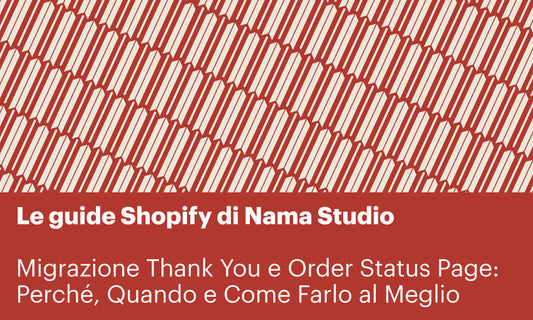For those brands that sell directly to consumers, the creation of a multilingual e-commerce appears to be particularly significant, considering that more than 80% of online shoppers between the age of 25 and 34 tend to shop also from other EU countries than their own. Therefore, one of the most common requests from European merchants that aim at an international market is the opportunity to own a multilingual store.
How do you build a multilingual website with Shopify? There are several solutions to consider. It is important to point out that selling internationally goes way beyond simple language localization, so the “right” strategy for implementing a multilingual setting varies according to each brand's needs and positioning. Entering different markets might require a new approach to marketing, logistics, price lists, payment systems and much more.
With this article we hope to support your decision-making by distinguishing and analyzing the two possible available architectures suited to selling internationally with Shopify, so that you can focus on your strategy rather than technical concerns.
There are basically two options to choose from:
- Single store with a multilingual functionality;
- Regional stores.
SINGLE STORE WITH A MULTILINGUAL FUNCTIONALITY
By the end of 2019, Shopify implemented a new API extension for translation management, which along with a plugin allows multilingual browsing on a single Shopify store. Our favourite plugin is Langify, but on the Shopify app store you can find many others, some of which for free too.
For every additional language new unique URLs are created, one for each translated page, with a maximum amount of 5 languages per store. This is done by adding the language code to the URLs:
E.g. domain.com (ENG), domain.com/it (IT)
Translated texts must be added directly into the selected app’s dashboard, since Shopify’s control panel doesn’t include a multilingual management tool.
On a SEO level, Shopify automatically adds meta tags and hreflang tags, and includes all the used languages on the site map, to allow search engines to detect every language of the store.
Pros:
- Simple, requires one shop only.
Cons:
- Not all apps are compatible, extra care in selecting other apps for the store is required;
- The automatic product feed (e.g. Google ads) is only provided in the primary language;
- The page URLs can’t be translated. Thus, the URL “domain.come/products/product-name” can’t be translated into “domain.com/it/products/nome-prodotto”.
This option is generally suggested for stores which:
- Feature plenty of content, making it preferable to upload text within one store only;
- Don’t have a regional-based order management, therefore creating separate stores could complicate daily operations.
REGIONAL STORES
With multiple regional stores, we can create separate Shopify accounts for every language, each one with its own URL:
E.g. domain.com (ENG), domain.it (IT)
In this case we can have the highest level of customization for each regional store.
Being completely separated stores, SEO management has no limits and it is possible to get entirely different contents for each regional site.
Pros:
- Better SEO, as we can set up page handles and extract product feeds for each language;
- More flexible in terms of design, offer and pricing personalization.
Cons:
- Higher cost, considering that each store needs both a Shopify plan and individual accounts for every app and integration. This multiplies running costs according to the number of operating languages;
- Separate control panels, so it is necessary to define which aspects need to be managed on each store individually (e.g. text content) and which can be synchronized with the use of an external plug-in (e.g. product inventory).
This second option is generally suggested for stores which
- Need to diversify their content and product catalog on a regional basis;
- Have a regional-based order management, therefore splitting the process on separate stores allows to optimize inventory and order management processes.
Shopify Plus
Shopify Plus brands usually choose to use separate stores for every region; and sometimes it is the need for many regional stores itself to drive brands towards Shopify Plus.
Shopify enterprise plan in fact includes the chance to have 10 store clones, beside several additional features, such as Shopify Flow and Script (extremely advanced automation tools), a B2B channel, the opportunity of a customized checkout and lower transaction fees.
-
If you are considering using Shopify for your online store, you can subscribe here for a free trial or email us at info@namastudio.it




